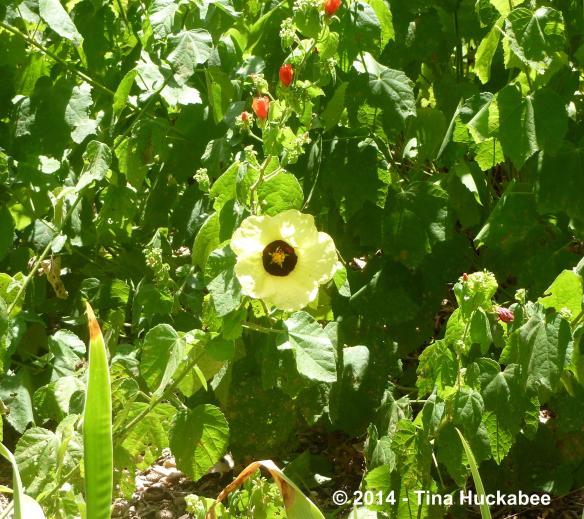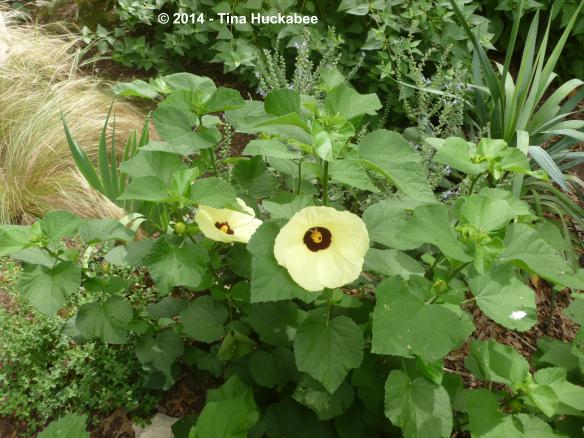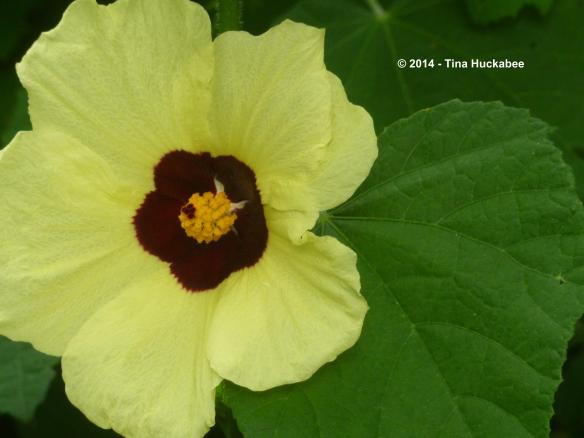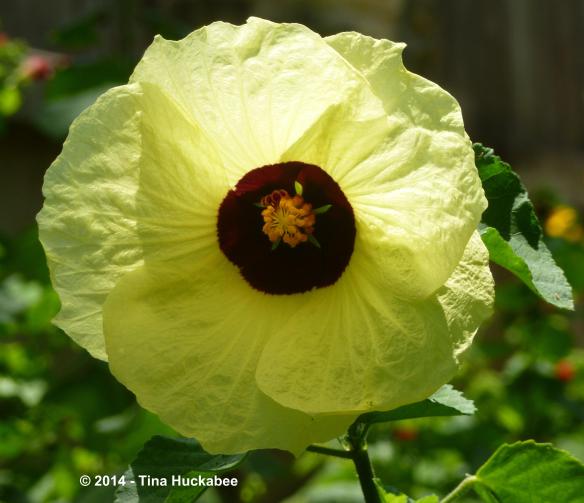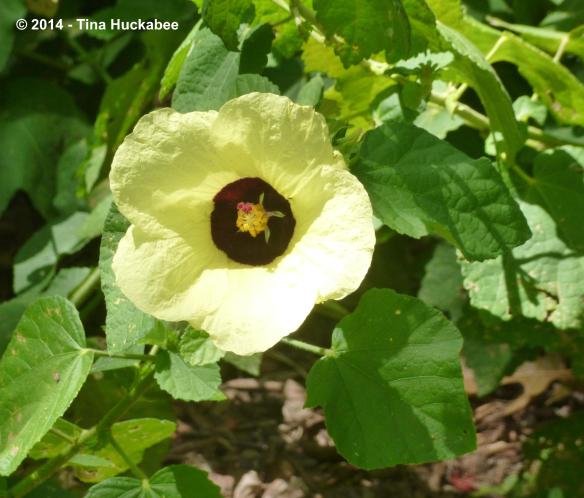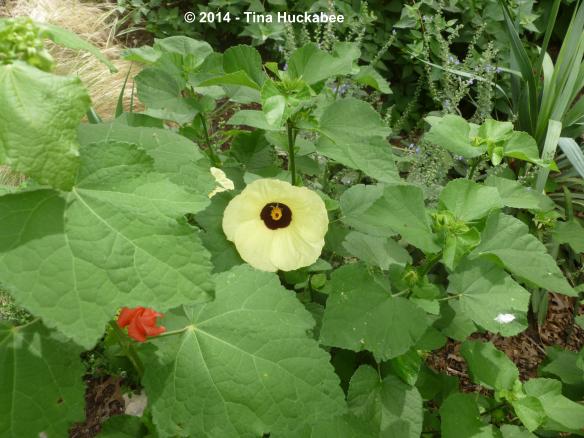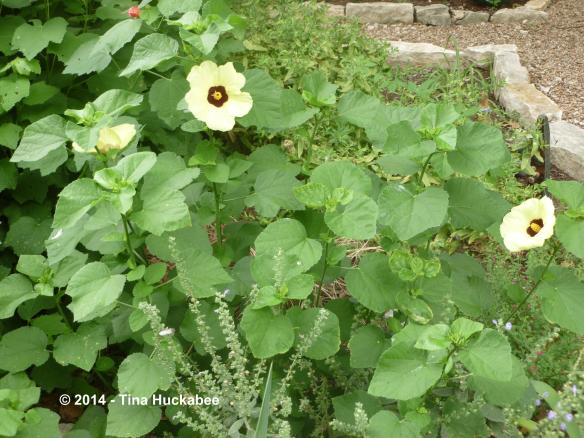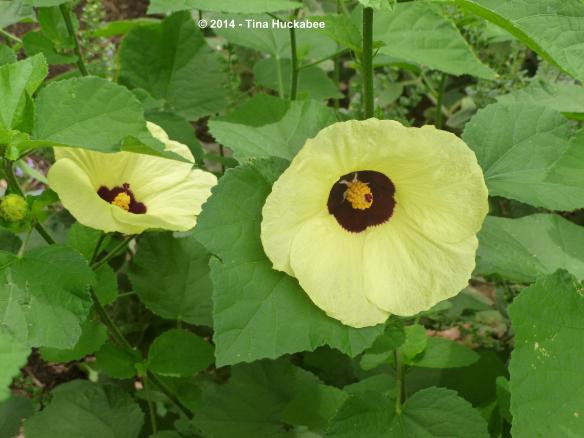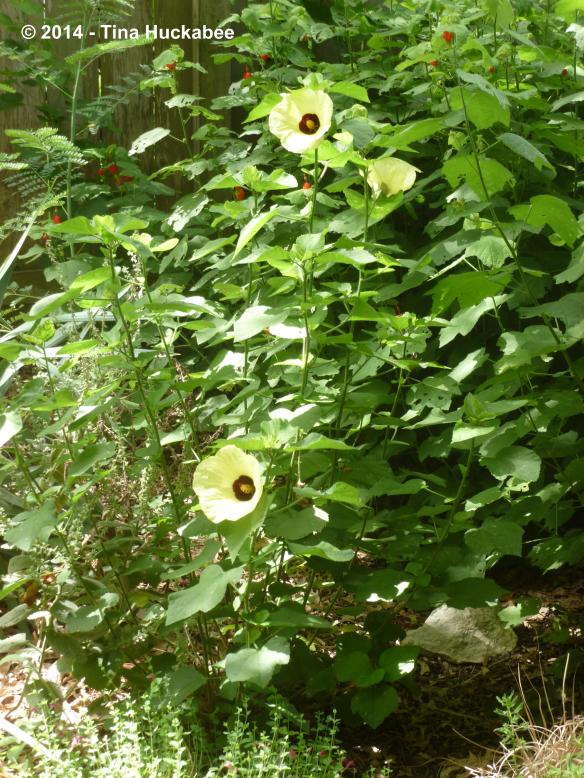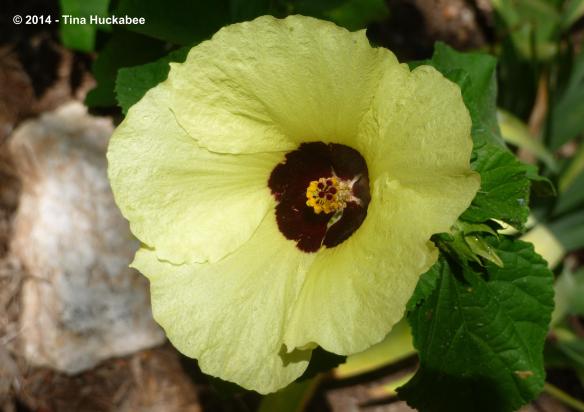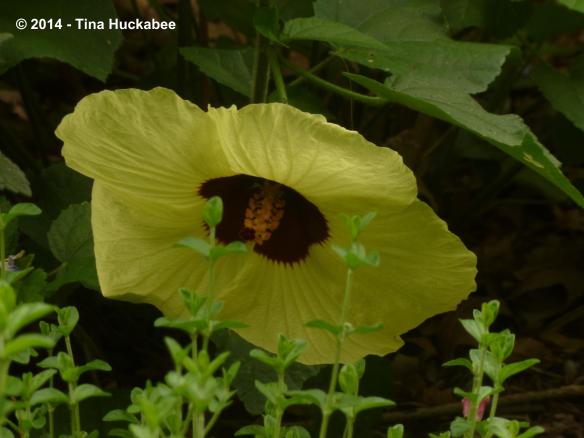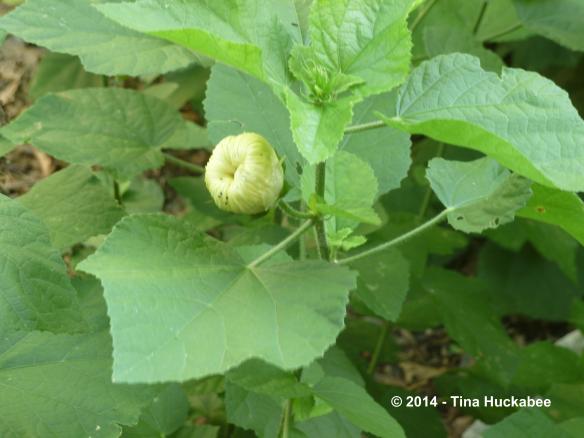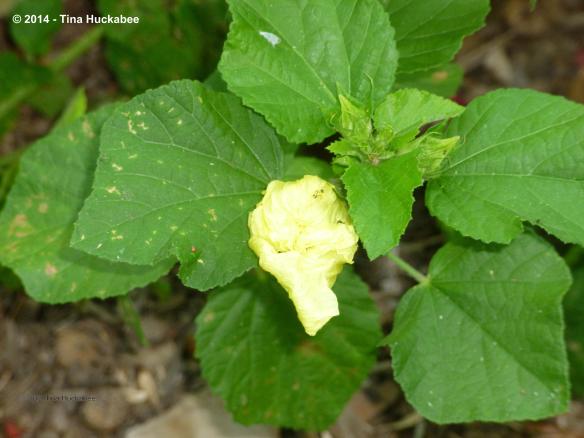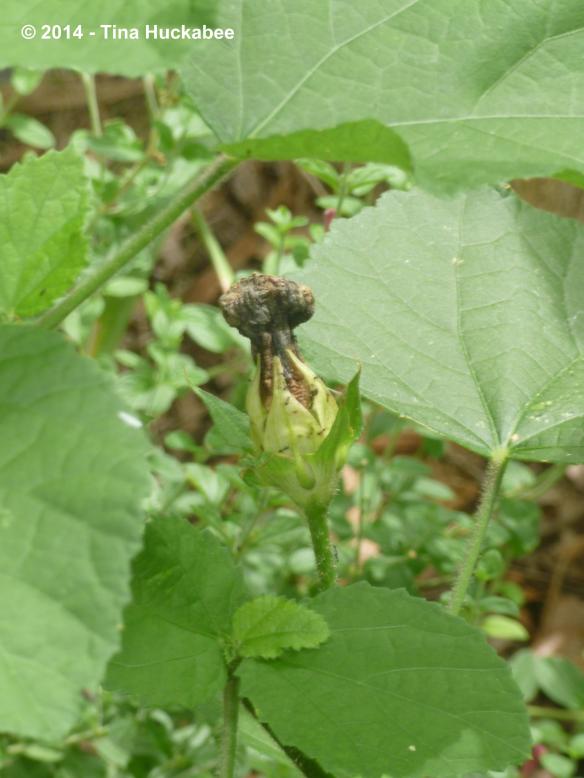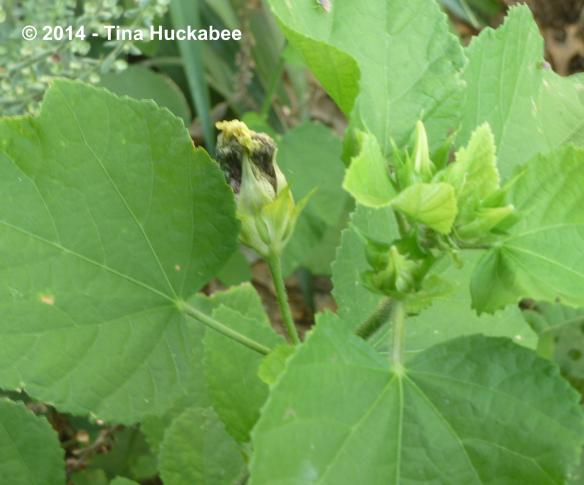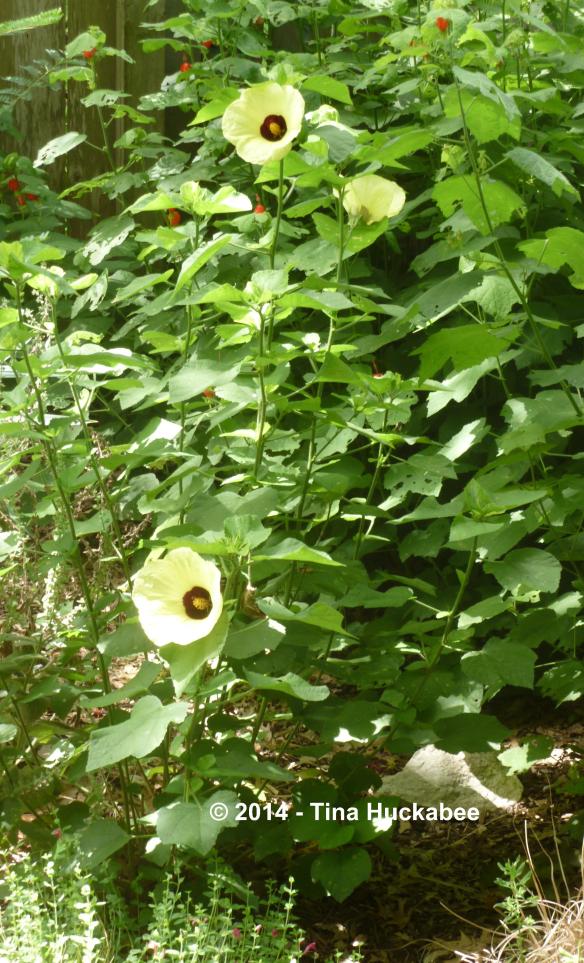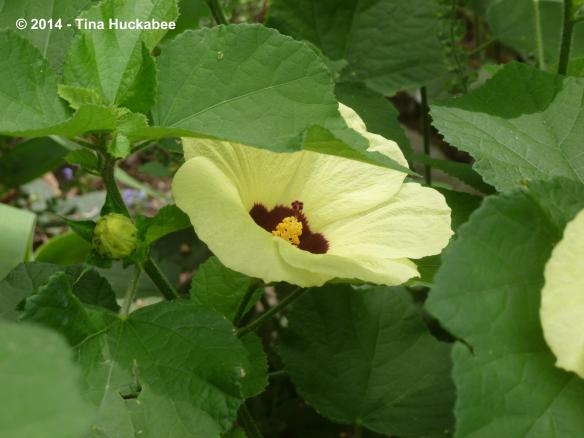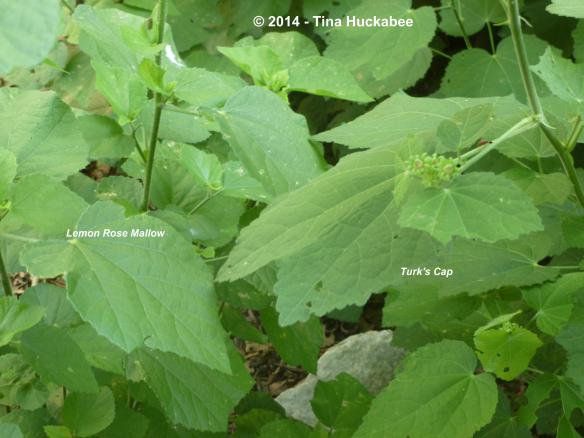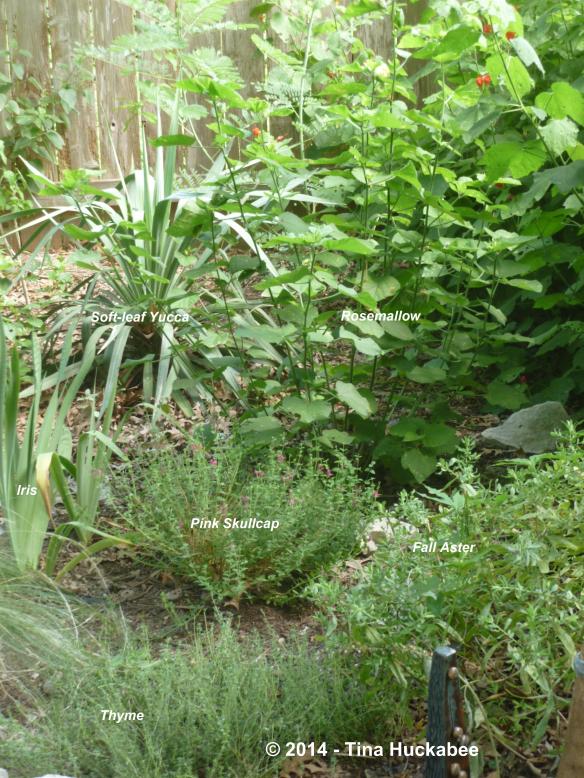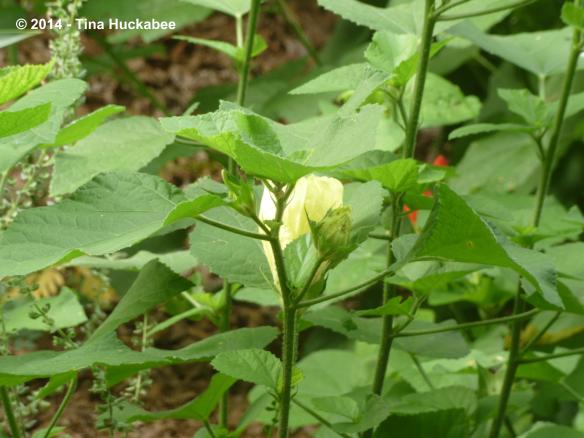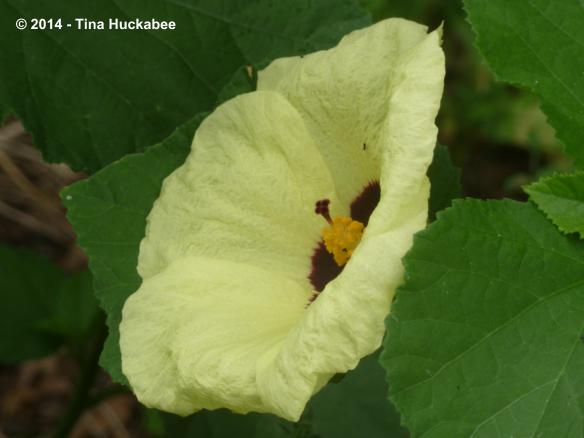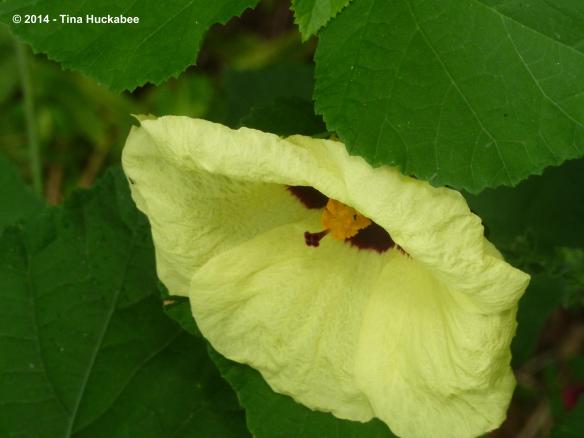A while ago, I wrote about a favorite plant in my gardens, the Lemon Rosemallow, Hibiscus calyphyllus.
The Rosemallow is still one of my favorite summer bloomers, but sadly, my original plant appears to be dying. One-by-one, in this past month or so, the leaves have turned yellow and wilted.
Within two weeks of the first looking-like-it-needs-water symptoms,
…the entire branch, with leaves, has turned crispy and died.
Even as the stems die off, the remaining dwindling-in-number healthy stems have continued to produce blooms. Such a stalwart, stoic little hibiscus.
I don’t know why the plant is dying–it may simply be that Rosemallow is not long-lived here in Central Texas. Rosemallow is not native, though it’s considered an appropriate landscape perennial for many places, including Central Texas. It was one of the best bloomers during the hellish 2011 summer of record heat and drought and it returned vigorously after our hard winter this past year. In between, I’ve been impressed with this lovely, but tough perennial because of its graceful form and constant blooming, coupled with its ability to shrug off drought conditions.
I’m trimming off the afflicted stems as they die,
….and have only three left stems left. Those stems will be gone soon–I can see the necrosis of the leaves beginning.
I’m sorry that this plant is at the end of its days, but I’m philosophical about my gardens and the plants I grow, even when an adored plant dies: it’s not the end of the world, there are way bigger problems than silly garden issues and the death of one plant is an opportunity to try something new. Or not. But I think in this case, as much as I’ve enjoyed the Rosemallow in that spot, I’m going with something different.
Just because.
A gardening friend is gifting to me some Garlic Chives, Allium tuberosum. I know that Garlic Chives are aggressive in the garden, but bees relish the blossoms and that mitigates any negative issues I might have with the plants. I’ll be a good gardener parent and practice tough love; I’ll make sure that the Chives don’t get out of hand and annex more than their assigned garden spaces.
Remember that statement when I’m complaining in four years that the Garlic Chives are everywhere.
I planted a new Rosemallow earlier this summer in a different part of my gardens,
…and it’s doing well. It’s grown, bloomed several times, and is filling out beautifully. I’ll let the idea of planting another Rosemallow somewhere else rumble around in my head for a while and maybe figure out another spot for some future planting date.
For now though, I’ll say a fond goodbye to a beloved perennial and its beautiful flowers.

